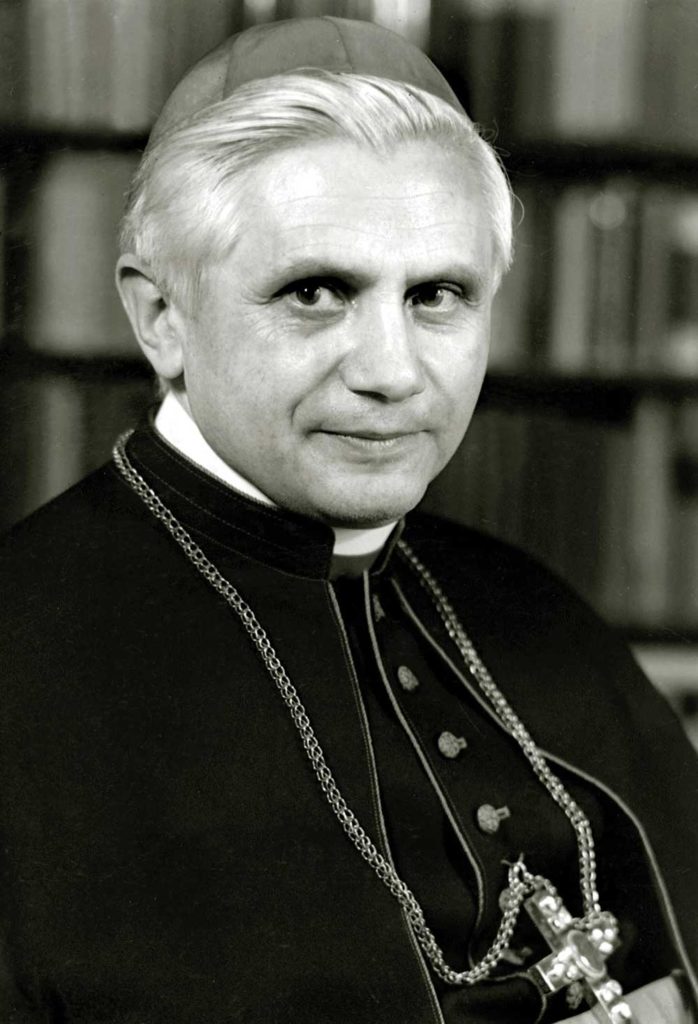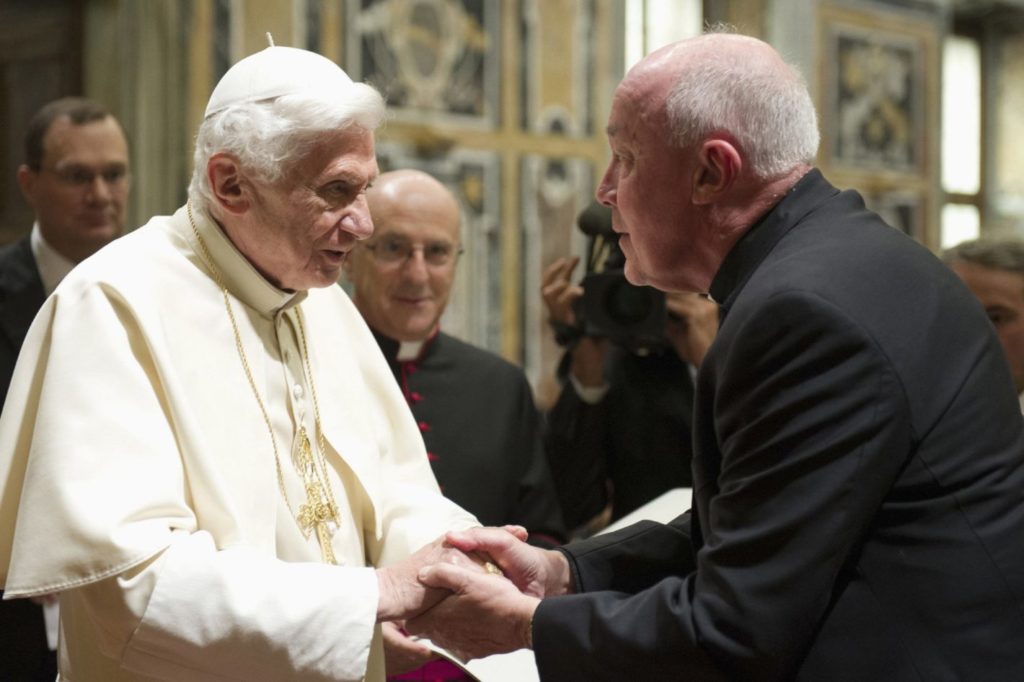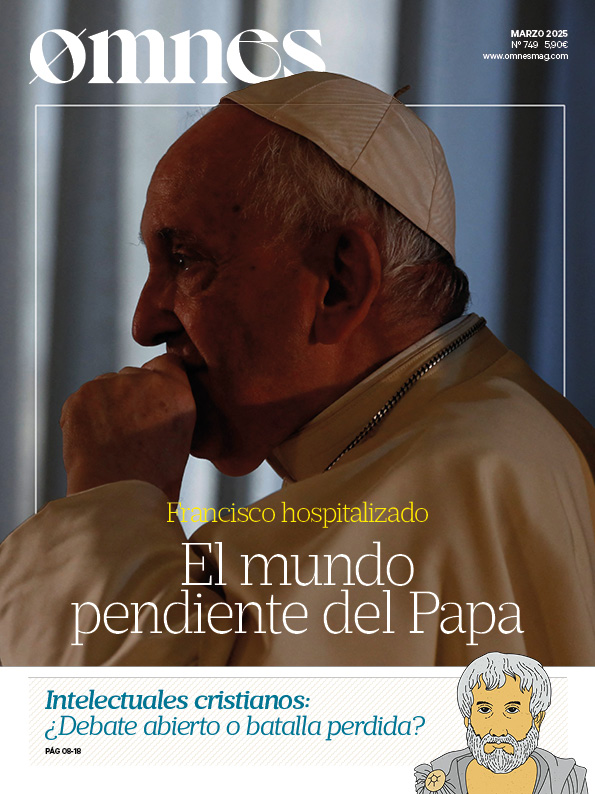The Second Vatican Council brought about a profound renewal for the Church, but it also unleashed an unexpected crisis. Joseph Ratzingerin Report on faithanalyzed how the initial enthusiasm gave way to confusion and tensions. This article serenely examines that process, its lights and shadows, and the need for a discernment faithful to the true conciliar intention.
Time is still needed for the gaze to calm down and also for the representative material to surface. Moreover, a certain historical distance is necessary to acquire objectivity and not to turn history into a judgment. It is only a matter of learning.
The complication is due to the fact that two things happened at the same time and with universal dimensions. They were years of authentic renewal and, at the same time, of authentic crisis. Of profound renewal and of profound crisis as well. The ferments of the Council should have raised a wave of authenticity, of fidelity to the spirit and of evangelization. And they did. But, surprisingly, they also provoked a wave of confusion, of identity crisis and of literally merciless criticism. It seems incredible that the two things could happen at the same time; and yet that is exactly what happened.
Drifting
Therefore, two metaphors are needed to describe the process, one happy and one unhappy. For the happy part, any metaphor of renewal will do. For the unhappy part, it is more difficult to find a suitable image.
For collecting the famous title of von BalthasarIn the last few years, the Church made a genuine effort to break down its strongholds. It completely changed its apologetic attitude, opened itself more to the world in order to evangelize it, and then something unexpected happened. It turned out that the bastions were like dykes. And, as they opened breaches, much more water came in than expected and everything began to move. The image of floating seems appropriate, because things did not move with order and direction, but simply drifted with the enormous inertias of such a gigantic institution as the Catholic Church. And to that same extent they became ungovernable.
With a certain naivety, it was thought that good will and a few basic inspirations were enough for things to arrive naturally at the planned port. For this reason, at the beginning and from the highest levels, a certain amount of haste was introduced. Creativity and spontaneity were also encouraged. And, very soon, the intermediate authorities were inhibited or overwhelmed by the initiative of the younger or more sensitized sectors.
All aspects of the Church's life, called for by the post-conciliar update, began to move: catechesis, theology teaching, liturgical celebrations, the discipline of the clergy, seminaries and religious orders and congregations. At first they moved slowly, as if loosening their moorings and joyfully letting go of old obstacles. Soon the processes accelerated and overflowed the planned channels.

A serious pastoral issue
The climate experienced at the heart of the Council, which was one of ecclesial communion, did not manage to spread serenely throughout the Church. Nor did the Council's message spread with the accents and emphasis that the Council Fathers had indicated. That enormous conciliar assembly, with its inevitably slow pace of discussion and decision-making, was quickly overtaken by the initiative of minorities, generally young people, who insisted on immediately implementing the supposed wishes of the Council according to the idea they had made of them.
How did they get that idea? That question is the key to the issue. Undoubtedly, the media had a great influence, reporting live on the Council and transmitting an image and priorities according to their own way of understanding things and their own expectations. Also influential were some experts who managed to appear as the authentic depositaries of the spirit of the Council, sometimes independently and above the letter of the documents and the spirit of those who actually made it.
Paradoxically, the Council, which wanted to be pastoral, had this enormous and unexpected pastoral problem. The message was not transmitted through the rather slow channels of Church government, but through the rapid channels of general communication and ecclesiastical magazines. And, in that way, it arrived completely transformed, even before the documents were approved and, of course, long before the official regulations to implement them were generated. What the Council was supposed to want was immediately put into practice and the utopia was immediately realized.
Report on faith
The effects of the drift are well known and need not be insisted upon: there were soon numerous personal crises among priests and religious. Catholic universities, colleges and hospitals were secularized or closed. In the apostolic movements a kind of disbanding took place. And religious practice declined markedly in all the countries of Europe, beginning with Holland.
In 1985, in a famous interview with the Italian journalist Vittorio Messori, titled Report on faithJoseph Cardinal Ratzinger said: "It is indisputable that the last twenty years have been decisively unfavorable for the Catholic Church. The results that have followed the Council seem cruelly opposed to the hopes of all, beginning with those of Pope John XXIII and, later, those of Paul VI. Christians are once again in a minority, more so than at any time since the end of antiquity.".
The great hopes and horizons opened up by the Second Vatican Council gave way to acute dissatisfaction and bitter criticism, both from those sectors that expected much more and from those who complained about the changes; and this led to much disunity.
Cardinal Ratzinger follows: "The Popes and the Council Fathers hoped for a new Catholic unity, and a division has ensued which, in the words of Paul VI, has gone from self-criticism to self-destruction. We expected a new enthusiasm, and all too often it ended in weariness and discouragement. We expected a leap forward, and we have found ourselves faced with a progressive process of decadence which has developed to a great extent under the sign of an alleged 'spirit of the Council', thus bringing it into disrepute.".
In that interview, conducted during his brief summer break at the Bressanone seminary, Cardinal Ratzinger, then Prefect of the Congregation for the Doctrine of the Faith, made one of the sharpest insights into the crisis, which is still read with profit. In its day it caused some discomfort, but it will remain a representative book of an era.
Need for discernment
Where was the harm? Why had the expected fruits not been produced? It is difficult to assess. And it is also difficult to know if the crisis would have occurred anyway, with the enormous sociological changes of economic development and, especially, with the irruption of television in every home, an authentic cultural and customary revolution, a challenge before which the evangelization of the Church was not and to a large extent is still not prepared.
Perhaps it would have been preferable to tempus slower and more gradual implementation. The institutions that imposed themselves calmly weathered the storm better, as did the dioceses and countries where, for various reasons, implementation slowed down. Especially the countries of the East, which were not in the mood for experiments, and many countries of Africa and Latin America, where the daily pastoral imperatives and the shortage of clergy demanded a great deal of realism.
But we must be clear. As Cardinal Ratzinger said: "In its official expressions, in its authentic documents, Vatican II cannot be held responsible for a development which - quite to the contrary - radically contradicts both the letter and the spirit of the Council Fathers.".
The examination of conscience of Tertio millennio adveniente
John Paul II wanted to make an initial assessment on the twentieth anniversary of the closing of the Council and convened an extraordinary Synod (1985). As the end of the millennium approached, he wanted to emphasize the importance of the Second Vatican Council for the Church and, at the same time, what was still pending. The Apostolic Letter Tertio millennio adveniente summarized the contributions of the Council.
"In the Conciliar Assembly, the Church, wishing to be fully faithful to her Master, questioned her own identity, discovering the depth of her mystery as Body and Bride of Christ. In her docile listening to the Word of God, she confirmed the universal vocation to holiness; she made provision for the reform of the liturgy, the 'source and summit' of her life; she encouraged the renewal of many aspects of her existence both at the universal level and at the level of the local Churches; she committed herself to the promotion of the various Christian vocations, both that of the laity and that of the local Churches; and she committed herself to the promotion of the different Christian vocations: that of the laity and that of religious, the ministry of deacons, that of priests and that of Bishops; he rediscovered, in particular, episcopal collegiality, a privileged expression of the pastoral service carried out by the Bishops in communion with the Successor of Peter. On the basis of this profound renewal, it opened itself to Christians of other Confessions, to the followers of other religions, to all the people of our time. At no other Council did the Council speak with such clarity of Christian unity, of dialogue with non-Christian religions, of the specific meaning of the Old Covenant and of Israel, of the dignity of the personal conscience, of the principle of religious freedom, of the diverse cultural traditions within which the Church carries out her missionary mandate, of the means of social communication." (Tertio millennio adveniente, n. 19).
Four questions for discernment
Among the topics that seemed to him to merit examination, he noted: "The examination of conscience must also look at the reception of the councilThis great gift of the Spirit to the Church at the end of the second millennium". (n. 36). And he asked four more specific questions, which run through the great conciliar encyclicals and point out the most significant points, according to the mind of Pope John Paul II.
-To what extent has the Word of God become fully the soul of theology and the inspiration of the whole of Christian existence, as called for by the Dei Verbum?";
–"Is the liturgy lived as the 'source and summit' of ecclesial life, according to the teachings of the Sacrosanctum Concilium?";
–"In the universal Church and in the particular Churches, is the ecclesiology of communion of the Lumen gentiumgiving space to the charisms, the ministries, the various forms of participation of the People of God, while not admitting a democraticism and sociologism that do not reflect the Catholic vision of the Church and the authentic spirit of Vatican II?";
–"A fundamental question must also be asked about the style of relations between the Church and the world. The conciliar directives - present in the Gaudium et spes and in other documents - of an open, respectful and cordial dialogue, accompanied by careful discernment and courageous witness to the truth, are still valid and call us to a further commitment". (n. 36).
With the letter and the spirit of the Council
For its part, in Report on the Cardinal Ratzinger advised: "The reading of the letter of the documents will allow us to rediscover its true meaning. spirit. If they are discovered in their truth, these great documents will allow us to understand what has happened and to react with new vigor. I repeat: the Catholic who, with lucidity and therefore with suffering, sees the problems produced in his Church by the deformations of Vatican II, must find in this same Vatican II the possibility of a new beginning. The Council is yoursnot of those who -not by chance- they no longer know what to do with Vatican II"..
The times of acute crisis have happily passed and have become times of New Evangelization, desired by the Council, proposed in those terms by St. John Paul II, encouraged by Benedict XVI and channeled today by Pope Francis. Much is due to the action of Pope John Paul II; and also to the discernment made by his successor, Benedict XVI. In the meantime, Report on faith is part of history.








